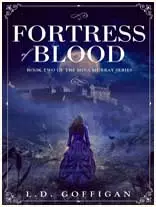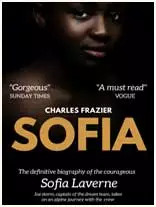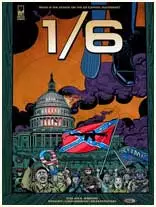What Are the Different Types of Editing? A Simplified Guide

The world of book editing can be confusing. New terminology appears at every step, and each editor offers slightly different services. This short guide will help you understand editing layers. Developmental Editing is a common word for new writers in the vast realm of book editing. Well, what does it involve? Why is it so crucial for future manuscripts? Jump in!
Developmental Editing
Every book needs a solid basis, whether an idea or a manuscript. Developmental editing helps there. Think of it as giving a seed the proper water, sunlight, and nutrition to grow into a healthy plant.
What's Developmental Editing All About?
Bird's Eye: Imagine flying over a giant jungle. The developmental editor shows you patterns, which trees should stay, where more greenery is needed, and where a water source will improve the landscape. They also assist you in finding tale components that need development, reorganization, or pruning.
Core Structure Focus: We must check our house's foundation before painting or choosing drapes. A developmental editor checks your story's storyline, character arcs, pacing, and themes for a solid narrative.
Advice and Direction: Unsure of your story's direction? Do you have a rambling plot or inconsistent character? Your developmental editor guides you toward an engaging story.
Positive Feedback: These editors don't point out errors. They're your book's first cheerleaders, praising its qualities and recommending ways to improve them.
Need a Developmental Editor?
It depends on your writing stage. A seasoned writer with a defined vision may skip this phase. A developmental editor may guide you through storytelling's rocky waters if you are lost or overwhelmed.
Writing is intimate but not lonely. Developmental editing allows you to collaborate on your creative ideas into a memorable story.
Evaluation Editing
Evaluation editing tests your manuscript. It is like having a trusted friend read your work and give an honest critique, except this friend is a professional with a good eye for literary structures and flow.
Macro Assessment: Evaluation editors utilize telescopes, unlike line editors, who use magnifying glasses. They evaluate your work's concepts, timing, and narrative arcs from afar.
Positive Feedback: A detailed analysis of your manuscript's merits and weaknesses is expected. This criticism isn't simply about pointing out mistakes; it offers ways to improve.
Markup Manuscript: Evaluation editors add high-level comments to manuscripts along with reports. These notes can fix plot holes, character inconsistencies, and structural issues.
Guide Your Next Moves: If the input looks good, it may lead to a developmental edit, content edit, or copyediting—evaluation editing guides manuscript development.
Evaluation Editing: Right for You?
The solution is in your manuscript. If you've finished your draft and need direction for editing, an evaluation edit is invaluable.
It's also essential for authors who are too connected to their work to have an independent, expert opinion on its preparation for the next steps.
Evaluation editing is like a literary GPS, directing authors through revisions and keeping them on target. Writing can be transformed into masterpieces by knowing its essence.
Content Editing
Great stories are frequently defined by their flawless storyline, characters, and themes integration. After deciding on your narrative's broad strokes, refine the details. Explore complex content editing.
If developmental editing sets the stage and tunes the instruments, content editing guarantees that every note, pause, and crescendo in your book's orchestra is in tune.
Content Editors Do What?
Paragraph-Level Analysis: Content editors focus, unlike developmental editors, who move chapters or restructure the book. They assess paragraph structure, flow, and transitions to ensure a smooth read.
Voice and Tone Improvement: A content editor ensures your writing appeals to your audience. They improve the story while retaining the author's voice.
Increasing Coherence: Content editors ensure that nonfiction arguments and novel plots flow logically and engagingly.
Remove or Add: Sometimes, less is more. Content editors may recommend removing unnecessary information or adding details to improve readability.
When You Need Content Editing?
Content editing begins when you're satisfied with your manuscript's structure, themes, and narrative arcs. This stage ensures your story's walls, windows, and embellishments are captivating while its base is solid.
It's essential for authors with a clear vision who require professional help refining their work. The diligent sculptor who turns a block of marble into a masterpiece highlights every feature, no matter how small.
Content editing connects your narrative's broad strokes with minute details. The correct content editor may help your work into a captivating read that engages readers.
Line Editing
It is challenging to keep each handwritten sentence elegant and precise. Line editing involves examining every line's details.
While content editing arranges furniture, line editing polishes it to a high shine. This meticulous approach guarantees that every line is robust and conveys its purpose.
The Line Editor Role
Sentence-Level Improvement: Line editors thoroughly review each sentence for clarity, consistency, and fluency. Run-on sentences, sentence fragments, and clichés will be removed.
Improving Word Choice: Not only correctness but finesse. Line editors recommend better synonyms and more effective language.
Stiffening Text: Writing concisely is a priority. Verbosity must be reduced, and each word must be valued. Why use ten words when five will do?
Style and Tone Consistency: A content editor considers tone broadly, whereas a line editor enforces consistency across lines.
Flow and clarity: They guarantee the writing is grammatically precise and reads fluently, making complicated concepts and tales engaging.
When to line edit?
Line editing is necessary after the manuscript's structure and substance are established and before copyediting. It guarantees correct, entertaining, and professional writing.
It's essential for writers who want to improve. Beautifully cut diamonds stand out from rough ones.
Finally, line editing is essential to manuscript refinement. A skilled line editor analyzes every line, word, and punctuation mark to ensure the final output is easy to read, distraction-free, and effective.
Copyediting
A prevalent fallacy is that an author's material is ready for publication after writing. Even the most careful writer will miss typos, inconsistencies, and stylistic flaws. Copyediting ensures accuracy and polish.
Copyediting improves text appearance. Consider it a complete, flawless cleaning of your manuscript.
Copyeditor duties
Grammar, Punctuation, and Spelling: It is essential but crucial. Copyeditors perfect these writing basics.
Consistency: Writing consistency—character names, scene settings, or serial commas—keeps readers engaged.
Style Guide Compliance: Specific genres and publishers follow style standards like the Chicago Manual of Style. A copyeditor ensures your manuscript follows these criteria.
Fact-Checking: A professional copyeditor will also spot obvious content errors, albeit this is not their primary job.
Clarity and readability: They may recommend rephrasing confusing sentences to make the content easy to read.
When You Need Copyediting?
One of the last steps in editing is copyediting. After addressing structural and line concerns, a copyeditor polishes the work for traditional, self-publishing, or digital publication.
Authors must realize copyediting goes beyond errors. It's about ensuring the document meets professional standards and is readable.
Proofreading
We all have experienced reading a book or article and spotting a typo or formatting error. It disrupts the plot or message. Proofreading, an important but frequently overlooked phase in book publishing, is involved.
Proofreading is the last inspection of a manuscript or document before printing or publishing it online. After all prior editing phases, it is the last chance to discover and fix any remaining issues.
Proofreaders' Duties
Grammatical and spelling errors: Even after several edits, these can pass. A proofreader's acute eye finds and fixes them.
Formatting Standards: Using consistent headings, bullet points, typefaces, and other design aspects across the document.
Page Layout: Verifying space, margins, headers, and alignment.
Text breaks: Having no widows or orphans (a single word at the end of a paragraph).
Lists and numbers: Check that tables, figures, and lists are numbered accurately.
The Value of Proofreading
Printing a book or posting an article online is risky. Mistakes reflect on the author, publisher, or organization. While copyeditors ensure content clarity and style guide compliance, proofreaders catch any overlooked errors.
Proofreading refines the final output, not changing it. The goal is to present a clean, error-free document, improve reading experience, and maintain content integrity.
Conclusion:
Content is king, and proofreading shines it. Although it's the last stage in publishing, it's crucial. Finally, the final checkpoint guarantees your message is delivered uninterrupted. Remember that proofreading is the finishing touch when presenting your work.
limited Time offer
- 00
- 00
- 2





